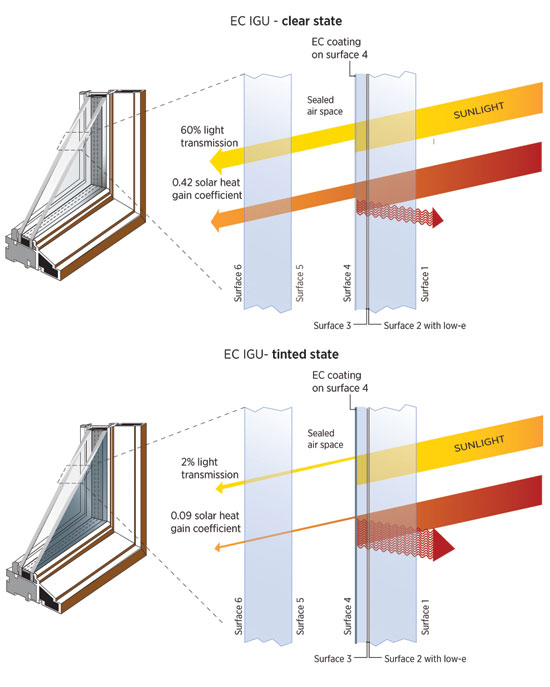Dynamic Solar Control with Electrochromic Glazing
Energy Performance of EC Glazing
Using EC glazing means that the glass essentially becomes a “valve” that can be used to meter, regulate, and optimize the use of the solar heat and light coming into the building. It does this by addressing two of the fundamental aspects of all glazing.
 |
EC glazing in its clear state (top image) allows a certain amount of light and solar heat to pass through. With a small electrical current, it changes to tinted (bottom image) and allows notably less heat and light to pass through. Images courtesy of SAGE Electrochromics, Inc. |
Solar Heat Gain Coefficient (SHGC)
This common glazing characteristic is simply the fraction of total solar radiation admitted through glazing. Expressed as a number between 0 and 1, the lower the SHGC, the less solar heat it transmits and the higher the shading ability.
Visible Light Transmission (VLT)
This similarly common trait is the percentage of the visible spectrum transmitted through a glazing and perceived by the human eye.
 |
SHGC to VLT relationship: Dynamic EC glazing can be tinted from a highly transmitting state to a very dark state to adapt to a wide range of sunlight conditions. By contrast, static glazing (the individual points on the chart) is specific to one condition and cannot be changed. Image courtesy of SAGE Electrochromics, Inc. |









